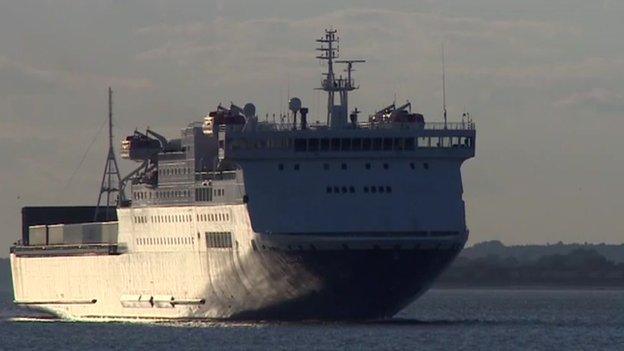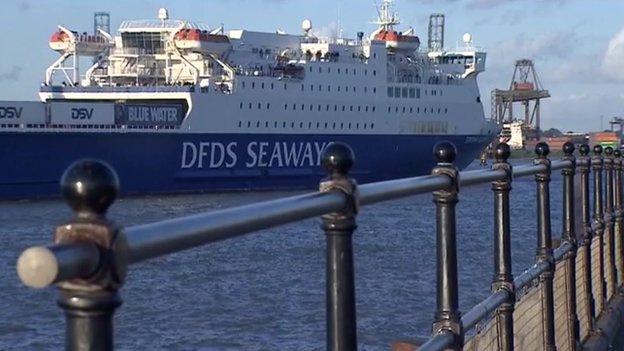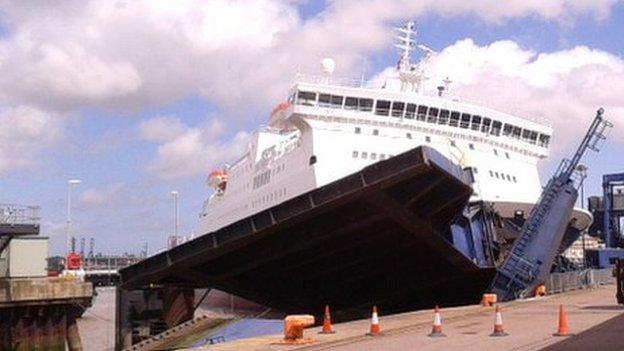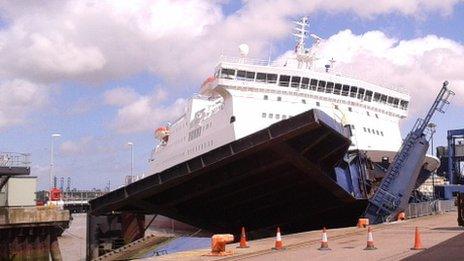DFDS Harwich to Esbjerg ferry route's final journey
- Published

DFDS described the end of the Harwich to Esbjerg ferry service as "a sad day for us all"
The UK's only ferry link to Scandinavia is to close for good, marking the "the end of an era", its operator says.
The route between Harwich, Essex and Esbjerg in Denmark, run by DFDS Seaways, has been in operation for nearly 140 years.
The company said the route "has been struggling for a long time" and would not be able to take on costs associated with a new environmental law.
The final ferry is to sail on Sunday.
Chief executive of DFDS Seaways, Niel Smedegaard, said: "The route is of particular historical significance to DFDS so it's a very sad day for us all.
"Our regrets go to our many passengers who must now see the last passenger ferry route between the UK and Scandinavia close."

How popular are ferries?

•Last year, 20.5 million people used ferries to travel abroad from the UK, external - the first year on year increase since 2010
•One of the most popular routes, between Dover and Calais, has had car ferries running since the 1930s
•The number of passengers travelling from ports on the East Coast fell last year for the third consecutive year, to 2.2 million
•A number of passenger routes linking Norway and Newcastle ceased running in 2008
•Ferries between Harwich and Hamburg in Germany were stopped in 2002
•Stena Line runs a ferry from Harwich to the Hook of Holland. The line has seen an increase in passenger numbers in recent years

From 1 January 2015, a European Union directive, external aimed at reducing sulphur dioxide emissions from ships will come into force.
DFDS said this would have resulted in a £2m a year increase in the cost of the Harwich to Esbjerg ferry route.
Mr Smedegaard said the company had not been able to reduce costs enough to enable the route to bear the extra charges.
In June last year, the Sirena Seaways vessel running the Harwich-Esbjerg route hit the quay while docking and started to let in water.

The "Sirena Seaways" ferry, which ran on the Harwich-Esbjerg route, crashed into a quay last year
There were 489 passengers on board, but no-one was trapped or injured.
The crash caused severe damage to the quay and holed the ferry in several places, some below the waterline.
An investigation found one of the ship's back-up systems was keeping an engine running at 63% power when it was approaching the dock.
This prevented tugs from moving the vessel so passengers could disembark safely.
At the time, DFDS said changes were made to stop such an accident happening again.
- Published14 February 2014

- Published23 June 2013

- Published22 June 2013
